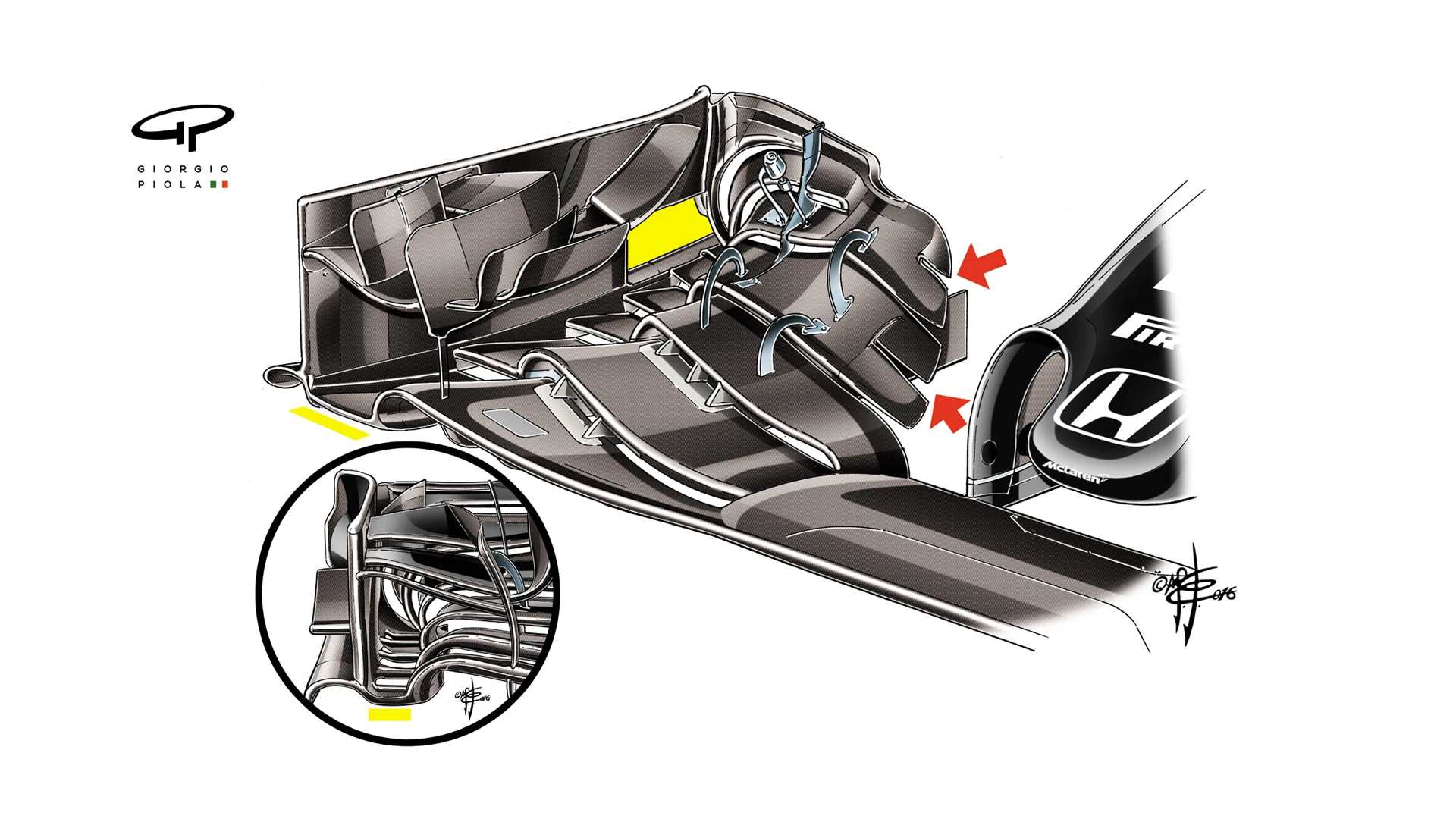As expected at the first European round of the season, several teams debuted new developments on their cars over the Spanish Grand Prix weekend - and will no doubt continue to do so at this week’s post-race test at the Circuit de Barcelona-Catalunya. We take a look at a trio of highlights, with the help of renowned technical illustrator Giorgio Piola…
McLaren MP4-31 - new front wing
Only Jenson Button had this new-generation front wing, produced by ex-Red Bull aerodynamicist Peter Prodromou. The biggest changes are the much wider flat section beside the endplate (underlined in yellow - compare with the previous version inset) and the big cut (yellow) in the endplate itself. Note that instead of having separate small flaps there are wider chords flaps with a slot (red arrows) in the area close to the centre. Fernando Alonso stuck with the previous front wing, which would have provided the team with useful additional data on the two designs’ relative performance. Both drivers raced with the new brake ducts tested on Friday morning by Button.

Ferrari SF16-H - asymmetric front brakes
Ferrari was among the teams with bigger front brake ducts in Spain. Not only that, they used an asymmetric layout with the three egg-shaped openings seen here on the ‘cake tin’ present only on the right side of the car. These aid the passage of heat from the brakes to the tyre, and helped balance temperatures with the left-front tyre - the one which does the most work around Barcelona.

Force India VJM09 - new front wing
Force India introduced what almost amounted to a B-spec version of their car in Spain, starting with a new chassis given to Sergio Perez, new sidepods and engine cover, and new floor with noticeable changes in the area in front of the rear tyres. Most visible, however, was the difference in the front wing, with a much deeper vertical step (1) in the outer section, which has also become wider (2). The upper flap, too, is new with its curved vertical fin (3), as are the fins (4) in the area beside the endplate, all designed to better manage airflow outside the front tyres.
Next Up
Related Articles
 Wolff calls Abu Dhabi ‘mediocre’ but ‘pleased’ to finish P2
Wolff calls Abu Dhabi ‘mediocre’ but ‘pleased’ to finish P2 Piastri ‘should be proud’ of his season says Brown
Piastri ‘should be proud’ of his season says Brown Hamilton 'doesn't have a mindset' for 2026 after tricky year
Hamilton 'doesn't have a mindset' for 2026 after tricky year Sainz hopes point-less finish in Abu Dhabi ‘serves as a wake-up call’
Sainz hopes point-less finish in Abu Dhabi ‘serves as a wake-up call’ Power RankingsWho dazzled our judges at the finale in Abu Dhabi?
Power RankingsWho dazzled our judges at the finale in Abu Dhabi? ‘I have achieved my dream, that little boy's dream’ – Norris
‘I have achieved my dream, that little boy's dream’ – Norris
